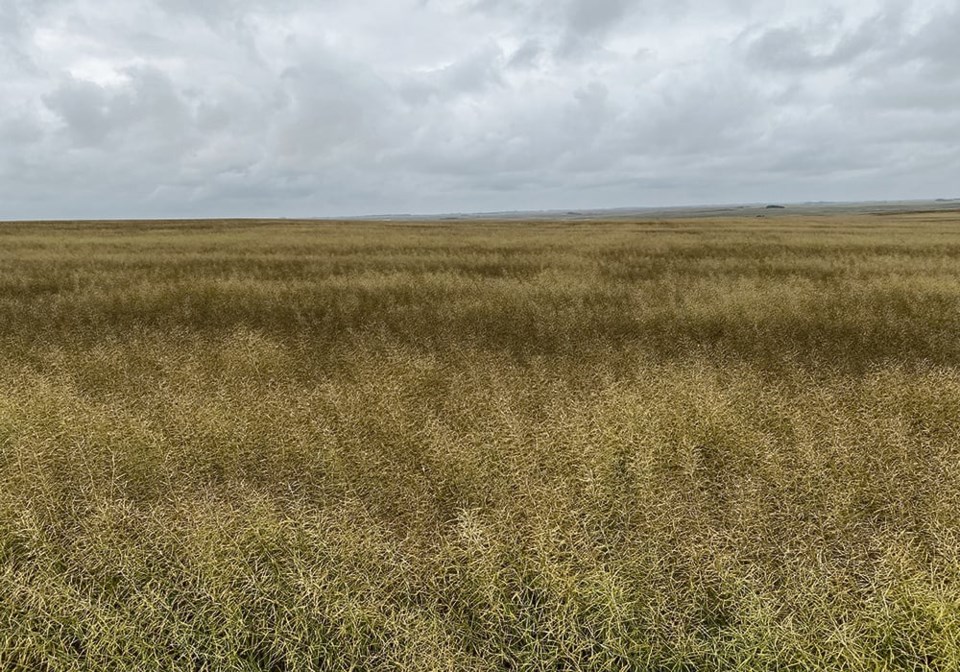WESTERN PRODUCER — Sooty mould is a non-pathogenic form of Alternaria that occurs if wet conditions are present during harvest
A black waxy coating began showing up on canola crops in central Saskatchewan in late August. However, despite a number of social media comments stating it was likely Alternaria blackspot, that’s not the case, according to a federal plant pathologist.
It’s the wrong time of year, said Kelly Turkington, a plant pathologist with the Agriculture Canada’s research centre in Lacombe, Alta.
“It’s sooty mould,” he said after reviewing photos posted on social media of canola pods covered in blackish dust.
The mould is part of a group of fungi species that feeds on dead organic material, and Turkington said it is a non-pathogenic form of Alternaria that occurs if wet conditions are present during harvest periods.
“The sooty mould species of Alternaria, Alternaria alternata, are much less damaging,” he said.
The time of year it shows up is a key indicator of whether it’s blackspot or sooty mould.
“If you are seeing this grayish, black growth on a mature plant or parts of a plant that have been killed by something, that’s sooty mould,” said Turkington.
“However, if you have pods that are still green, green, green and you have distinct blackish lesions on the pods and you see symptoms on lower green leaves, then you are dealing with Alternaria blackspot.”
He said it can show up if parts of a field have died due to environmental factors such as moisture deficiency, hail or other plant diseases.
However, he stressed that blackspot would likely be spotted in July rather than during late August or September.
“There is nothing you can do about sooty mould development,” Turkington said.
“It doesn’t typically cause yield loss. It might cause some discolouration of the grain and that gets downgraded due to weathering or microbial discolouration or load, but you normally don’t see much of an impact on yield.”
However, there can be impacts if the canola is to be used for feed.
“If there is a lot of sooty mould, the grain or forage that you are trying to feed to animals might have off flavours to it,” he said.
“They don’t like the taste of it or because there are billions of Alternaria spores floating around, that can cause some allergenic issues.”
While the disease is common, Turkington said there hasn’t been much exposure to it lately because environmental factors haven’t been right, such as what happened in 2016 when harvest was delayed due to wet conditions.
“Let’s say it starts to turn in the second, third week of August; it’s normal ripening colour and then you have wet conditions after that,” he said.
“In that situation, these sooty moulds proliferate.”
Cooler temperatures below 10 C will stymie the development of sooty mould, but warmer conditions will see it colonize dead plant material.
The only way to deal with the mould is timely harvesting if it’s possible to get into the field.
“That may be out of the hands of a producer,” said Turkington.
As for Alternaria blackspot, he said Polish canola is more susceptible but the introduction of Argentine varieties has seen the pathogen become less common.
“One contributing factor to more blackspot in Polish canola is the occurrence of sulphur deficiency,” he said.
“It is one of the few nutrient deficiencies where you can see a substantial increase in blackspot. This may also be a factor for Argentine canola where sulphur deficiencies lead to somewhat higher levels than normally expected with Argentine canola.”
While sooty mould may turn a nice looking field from golden brown to dusty black, Turkington stressed it is mostly superficial growth rather than a pathogenic development of blackspot.
Bookmark SASKTODAY.ca, Saskatchewan's home page, at this link.

